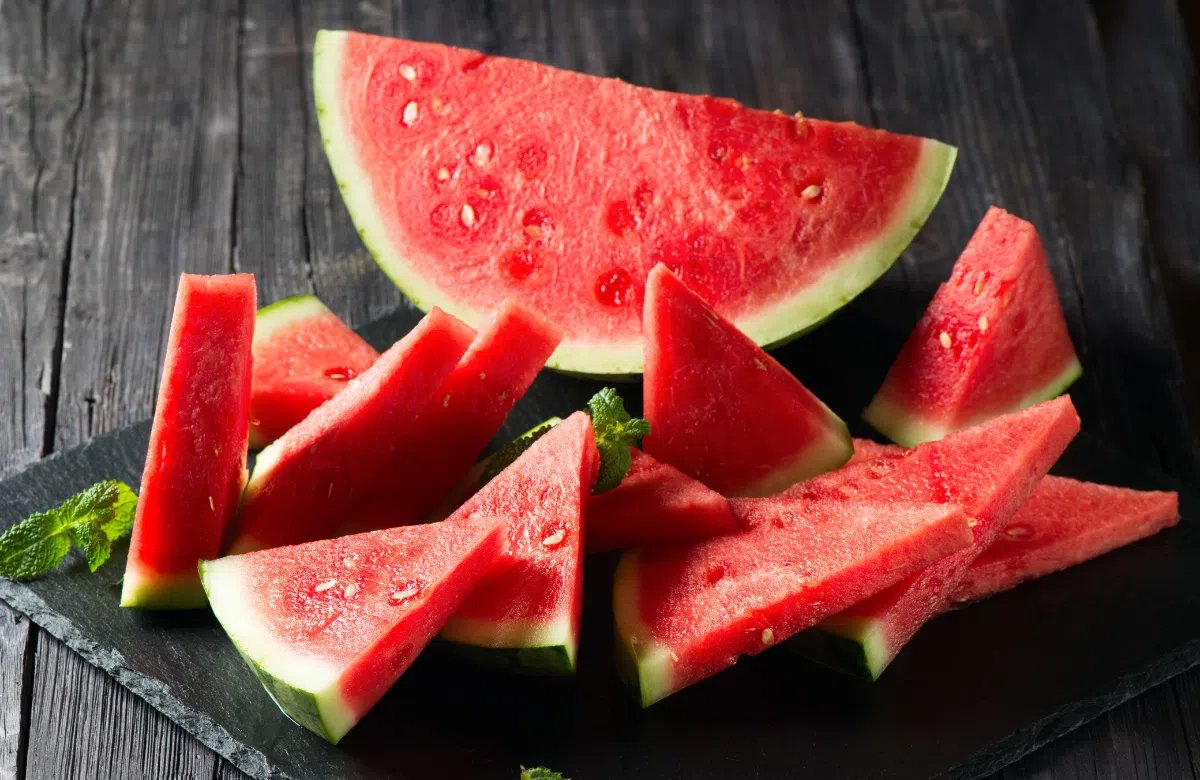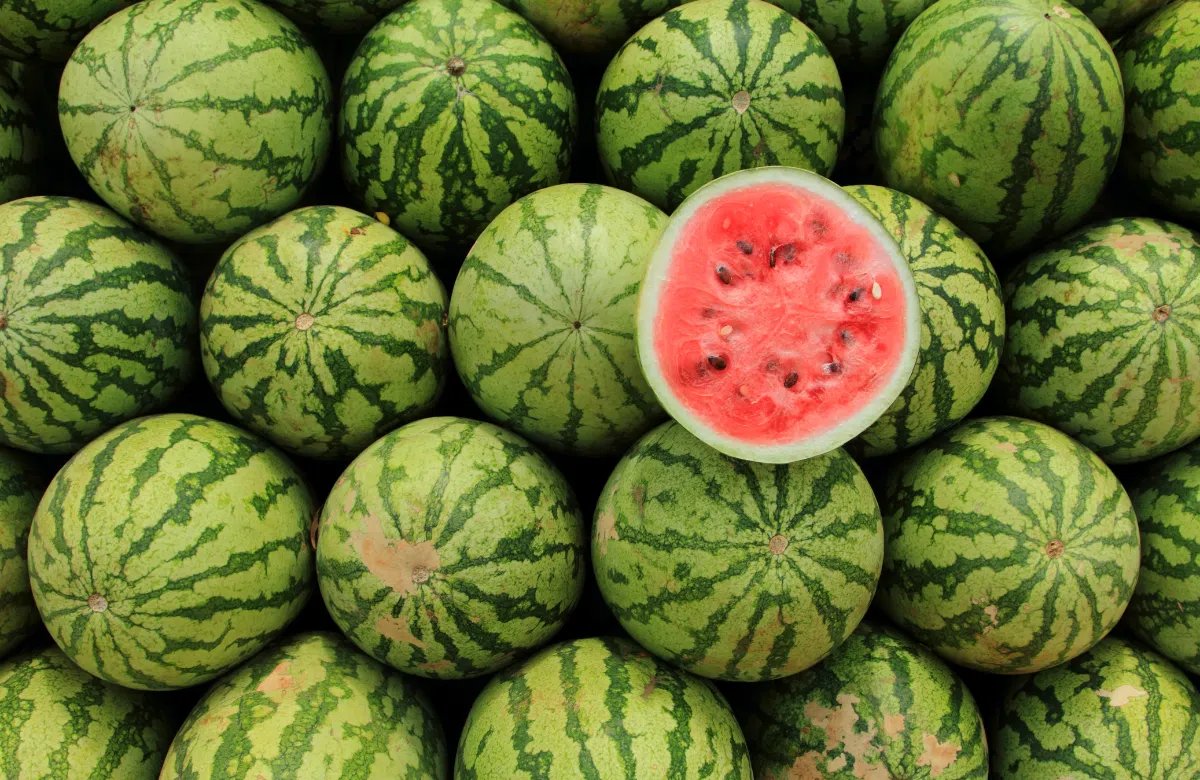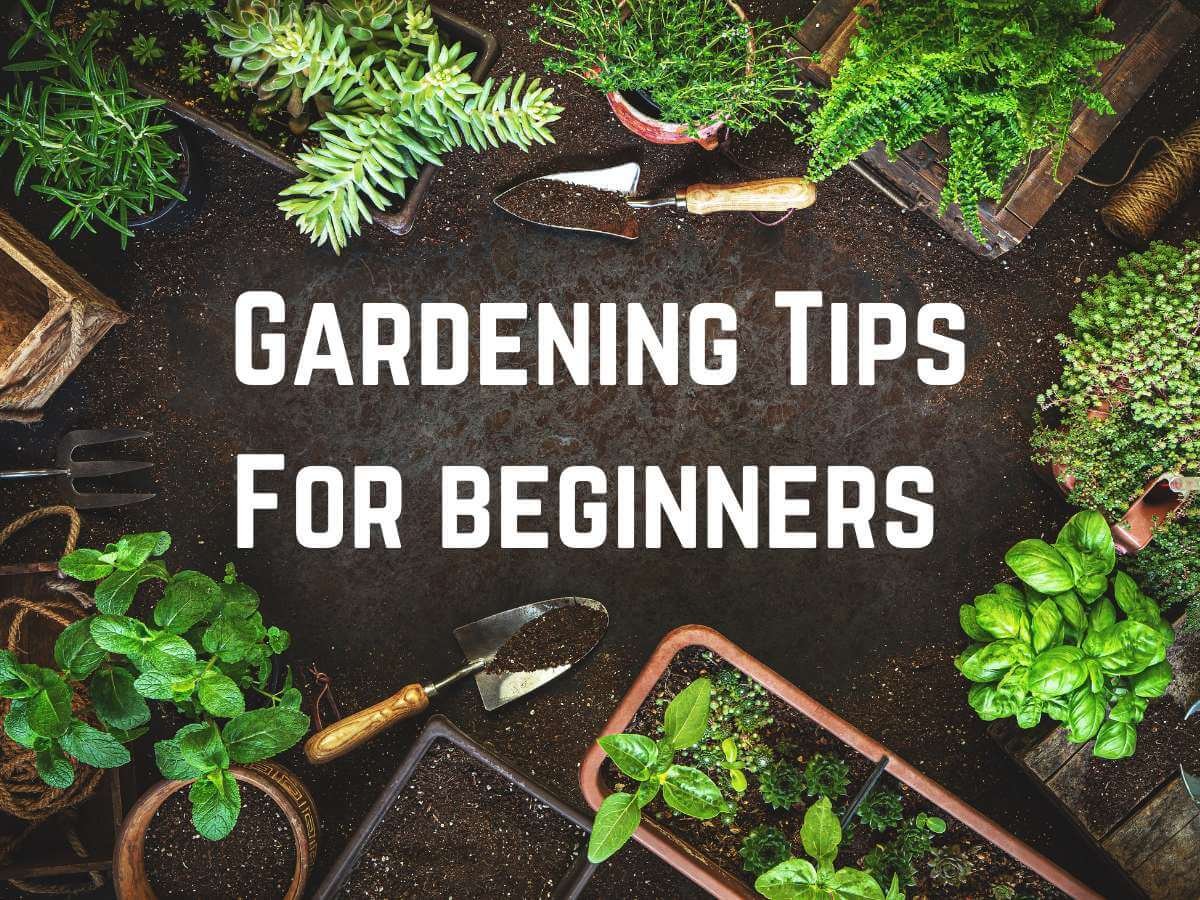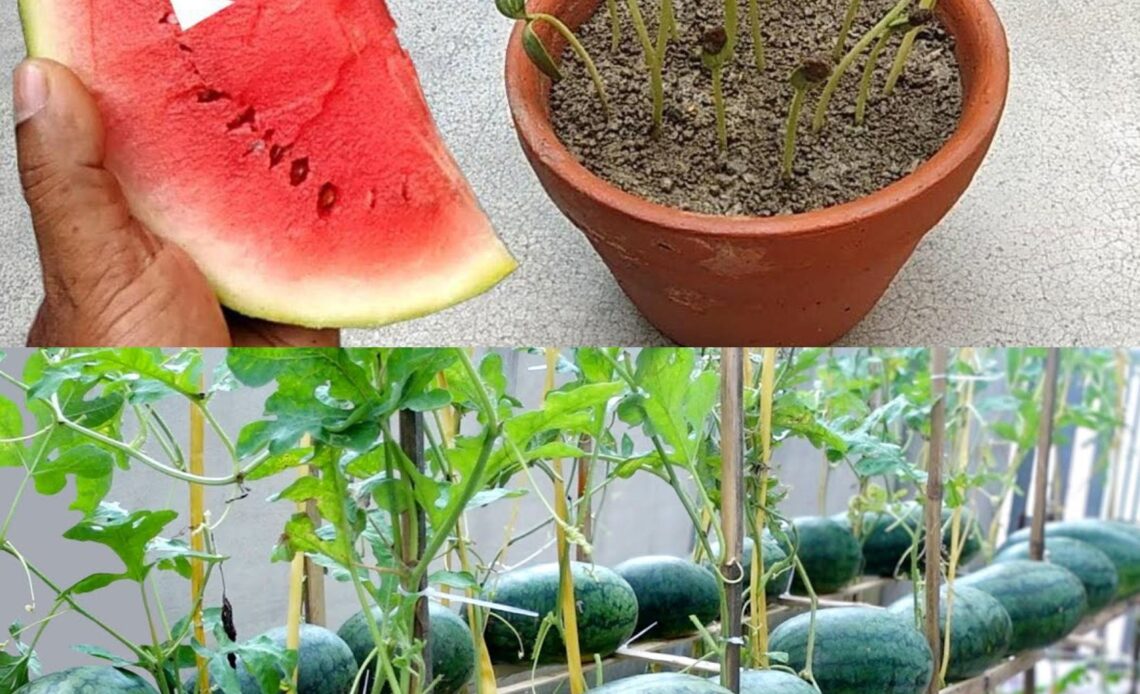Watermelons are a summer favorite, known for their sweet, refreshing taste and high water content. Many people assume that growing watermelons requires a large backyard or extensive garden space. However, with the right techniques, you can successfully grow juicy watermelons in containers, even on a balcony or small patio.
Container gardening allows urban gardeners and those with limited space to enjoy homegrown watermelons. With proper care, sunlight, and watering, you can cultivate healthy watermelon plants that produce delicious fruit. This comprehensive guide will walk you through everything you need to know about growing watermelons in containers, from selecting the right pot to harvesting the perfect fruit.
## **Why Grow Watermelons in Containers?**

Growing watermelons in containers offers several benefits:
– **Space Efficiency** – No need for a garden; a balcony, patio, or rooftop is enough.
– **Better Pest Control** – Container plants are less exposed to ground pests and soil-borne diseases.
– **Easier Soil Management** – You can control soil quality by using a well-balanced potting mix.
– **Portability** – Containers can be moved to optimize sunlight exposure or protect plants from harsh weather.
By following the right steps, even beginners can successfully grow watermelons in containers and enjoy a bountiful harvest.
## **Choosing the Right Watermelon Variety**
Not all watermelon varieties thrive in containers. Since traditional watermelons grow large vines that spread across the ground, it’s best to select smaller, more compact varieties. Here are some ideal choices for container gardening:
– **Sugar Baby** – A popular variety producing small, round, sweet watermelons.
– **Golden Midget** – A fast-growing, small watermelon with yellow skin and sweet flesh.
– **Bush Sugar Baby** – A compact version of the classic Sugar Baby, perfect for small spaces.
– **Mini Love** – A personal-sized watermelon that matures quickly and has a deliciously sweet taste.
These varieties are ideal for container growing because they have shorter vines and require less space compared to traditional types.
## **Selecting the Right Container**

The container size plays a crucial role in the success of your watermelon plant. Since watermelon roots need plenty of space to grow, choose a container that meets the following requirements:
– **Size** – A minimum of 5 gallons, preferably 10-15 gallons for better growth.
– **Depth** – At least 18 inches deep to allow strong root development.
– **Drainage** – Ensure the container has multiple drainage holes to prevent root rot.
Fabric grow bags, large plastic pots, or wooden barrels work well for growing watermelons. Avoid using small containers, as they restrict root growth and can lead to poor fruit production.
## **Preparing the Soil for Watermelon Plants**
Watermelons thrive in well-draining, nutrient-rich soil. Use a high-quality potting mix combined with compost or organic matter for the best results.
– **Soil Type** – A mix of potting soil, compost, and perlite or sand for drainage.
– **pH Level** – Ideally between 6.0 and 6.8 for optimal nutrient absorption.
– **Fertilization** – Use a balanced 10-10-10 fertilizer or an organic compost mix to boost growth.
Before planting, fill the container with soil, leaving about 2 inches from the top to allow for easy watering.
## **Planting Watermelon Seeds or Seedlings**
You can start your watermelon plant from seeds or seedlings, depending on your preference.
### **Starting from Seeds**
1. **Sow the seeds** – Plant 2–3 watermelon seeds about 1 inch deep in the soil.
2. **Water lightly** – Keep the soil moist but not waterlogged.
3. **Germination time** – Seeds usually sprout within 7–10 days.
4. **Thin out seedlings** – Once seedlings grow, remove the weaker ones and keep the strongest plant.
### **Transplanting Seedlings**
If using nursery-grown seedlings, follow these steps:
1. **Dig a hole** – Make a hole in the center of the container.
2. **Gently place the seedling** – Avoid disturbing the roots too much.
3. **Fill the hole** – Cover the roots with soil and press gently to secure the plant.
4. **Water thoroughly** – Provide enough water to help the plant adjust.
Starting with seedlings speeds up the growing process, but seeds allow for a wider selection of watermelon varieties.
## **Providing Proper Sunlight and Water**

### **Sunlight Requirements**
Watermelons need **at least 6–8 hours of direct sunlight** daily. Place the container in a sunny location such as a balcony, rooftop, or south-facing window. If growing indoors, use grow lights to supplement natural sunlight.
### **Watering Schedule**
Proper watering is crucial for healthy growth and fruit development.
– **Early Growth** – Keep the soil consistently moist but not soggy.
– **Flowering Stage** – Reduce watering slightly to encourage fruit set.
– **Fruiting Stage** – Water deeply but avoid overwatering to prevent fruit splitting.
Watermelons prefer **deep watering**, allowing the moisture to reach the roots. Always water at the base of the plant to prevent fungal diseases on the leaves.
## **Training and Supporting Watermelon Vines**
While some watermelon varieties grow as compact bushes, others produce long vines. Providing support helps save space and improves airflow.
– **Use a Trellis** – If growing vertically, secure vines to a trellis with soft ties.
– **Provide Hammocks** – Use mesh slings to support the weight of the fruit and prevent breaking.
– **Prune Excess Vines** – Trim side shoots to direct energy toward fruit production.
Training vines upward is an effective way to grow watermelons in small spaces while preventing fruit from touching the ground.
## **Fertilizing for Healthy Growth**
Feeding watermelon plants with the right nutrients ensures better fruit development.
– **Early Stage** – Apply a balanced fertilizer (10-10-10) every 2–3 weeks.
– **Flowering Stage** – Switch to a phosphorus-rich fertilizer (5-10-10) to promote blooming.
– **Fruiting Stage** – Reduce nitrogen to focus energy on fruit growth.
Organic options like compost tea or fish emulsion also work well for feeding watermelon plants.
## **Pollination and Fruit Development**
Since watermelon flowers need pollination to produce fruit, hand-pollination may be necessary in container gardens.
1. Identify male and female flowers (female flowers have a tiny fruit at the base).
2. Use a small brush or cotton swab to transfer pollen from the male flower to the female flower.
3. Repeat the process for several flowers to increase fruit production.
This step is crucial if growing watermelons in an area with low bee activity.
## **Harvesting Watermelons at the Right Time**

Watermelons take **70–90 days** to mature, depending on the variety. Here’s how to know when they’re ready for harvest:
– **Rind Changes** – The skin becomes dull instead of shiny.
– **Underside Color** – The bottom turns from white to yellowish.
– **Tendril Test** – The tendril near the fruit stem dries out and turns brown.
– **Thump Test** – A ripe watermelon produces a deep, hollow sound when tapped.
Use a sharp knife or shears to cut the fruit from the vine, leaving a small portion of the stem attached.
## **Final Tips for Success**
– **Avoid overwatering once the fruit forms** to prevent splitting.
– **Rotate the container occasionally** for even sunlight exposure.
– **Protect young plants from strong winds** by placing them in a sheltered area.
Growing watermelons in containers may take some patience, but the reward of harvesting your own juicy, homegrown fruit is worth it. Whether you have a small balcony or a limited backyard space, you can enjoy the sweet taste of summer by following these simple steps.
Now that you know the secret, are you ready to start growing your own watermelons at home?
